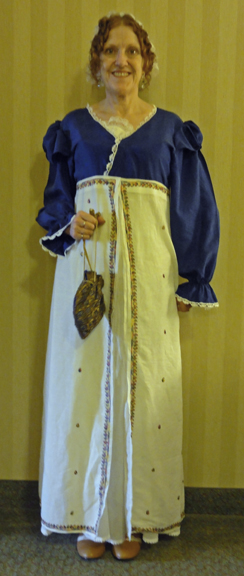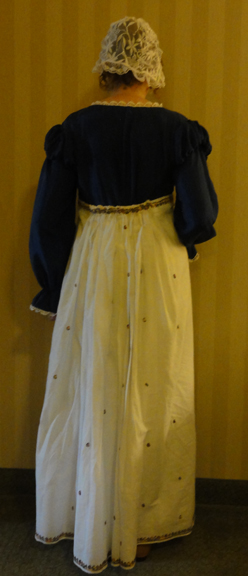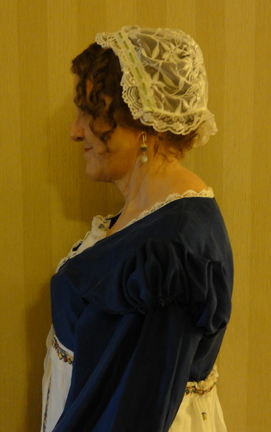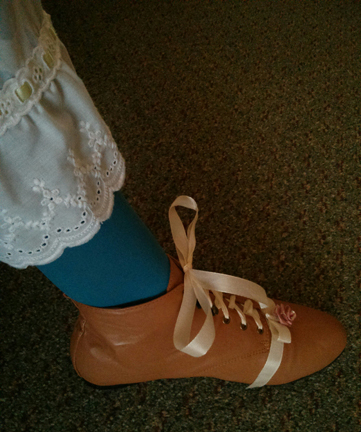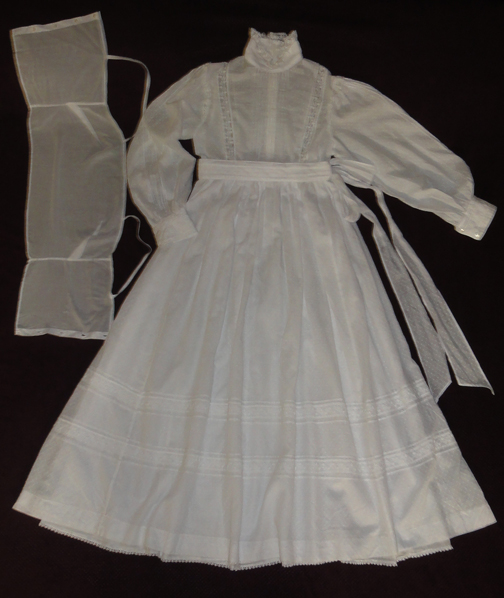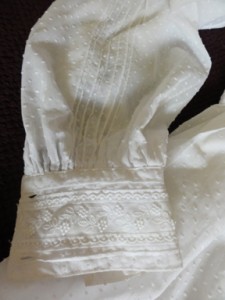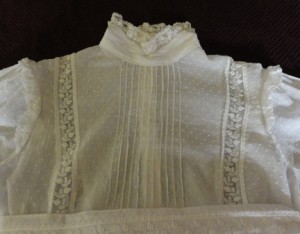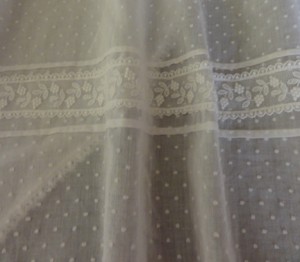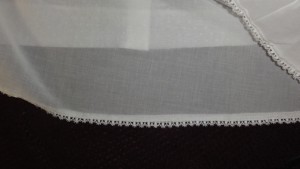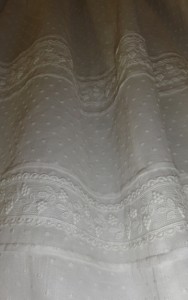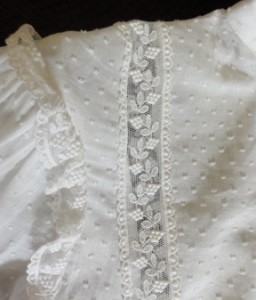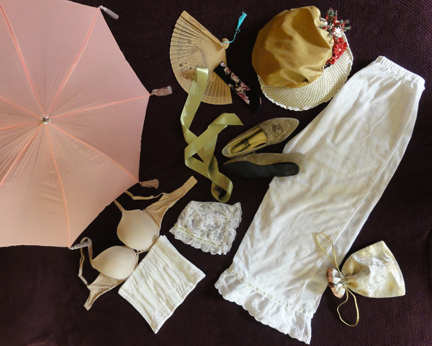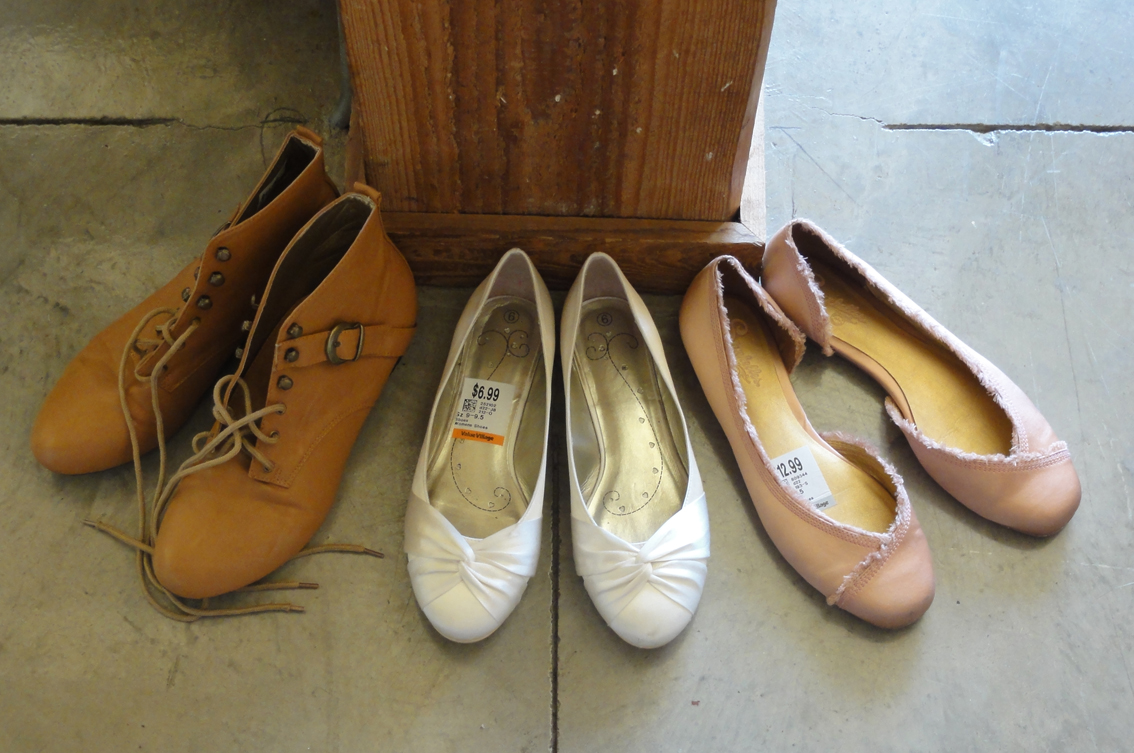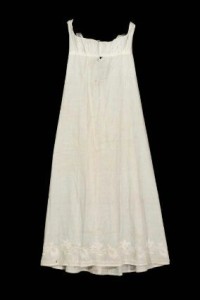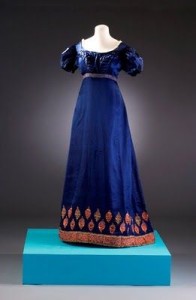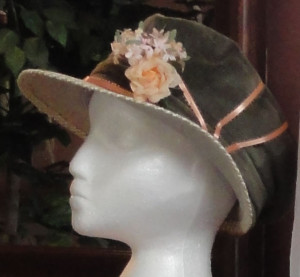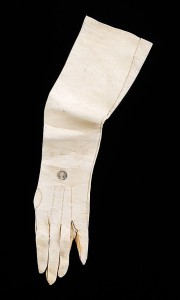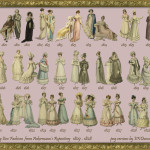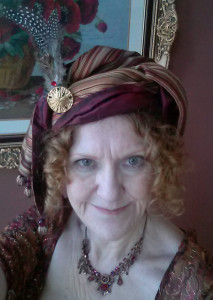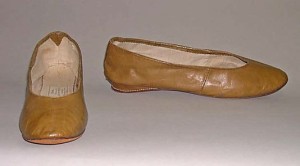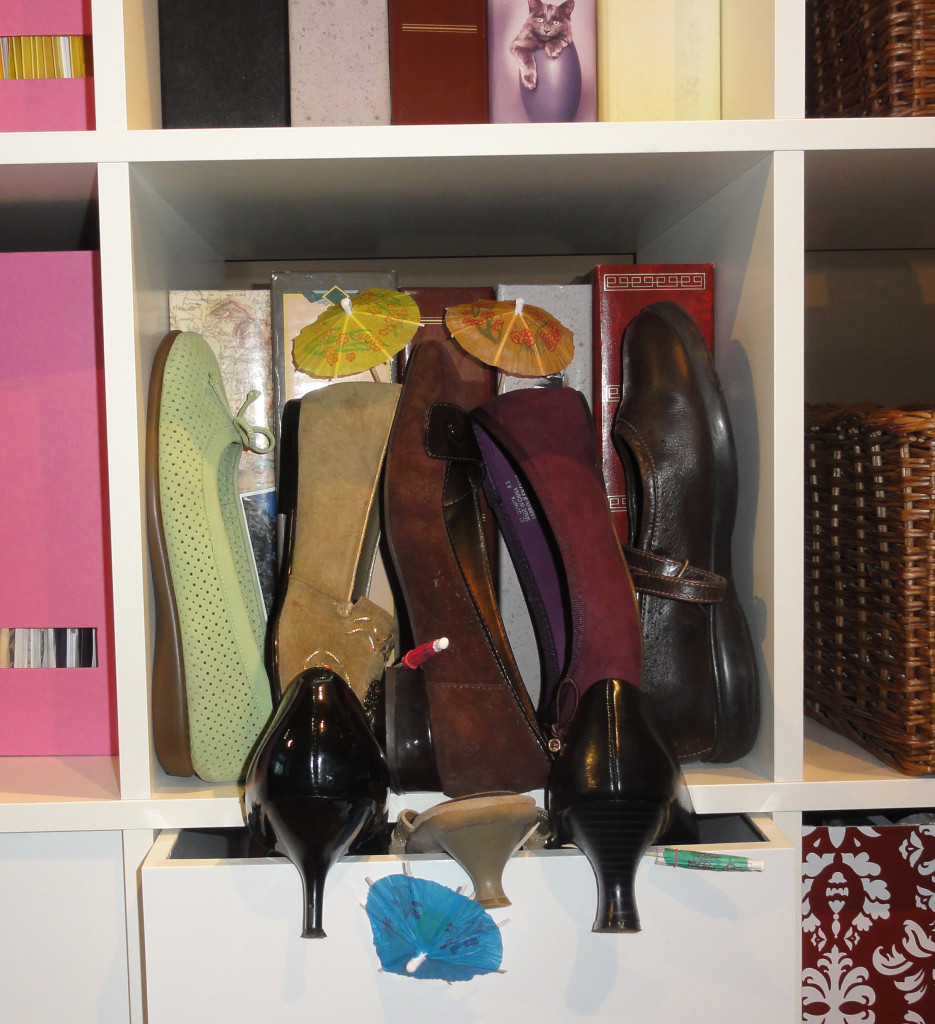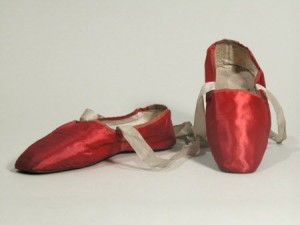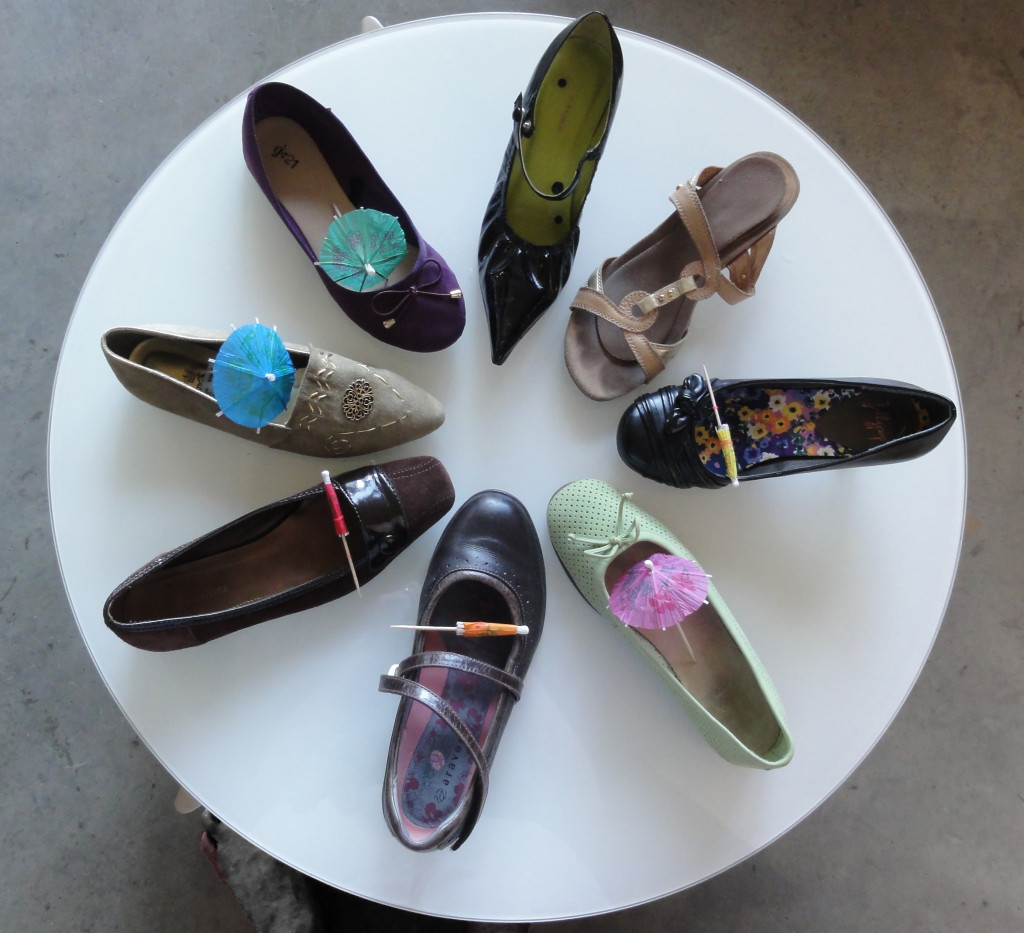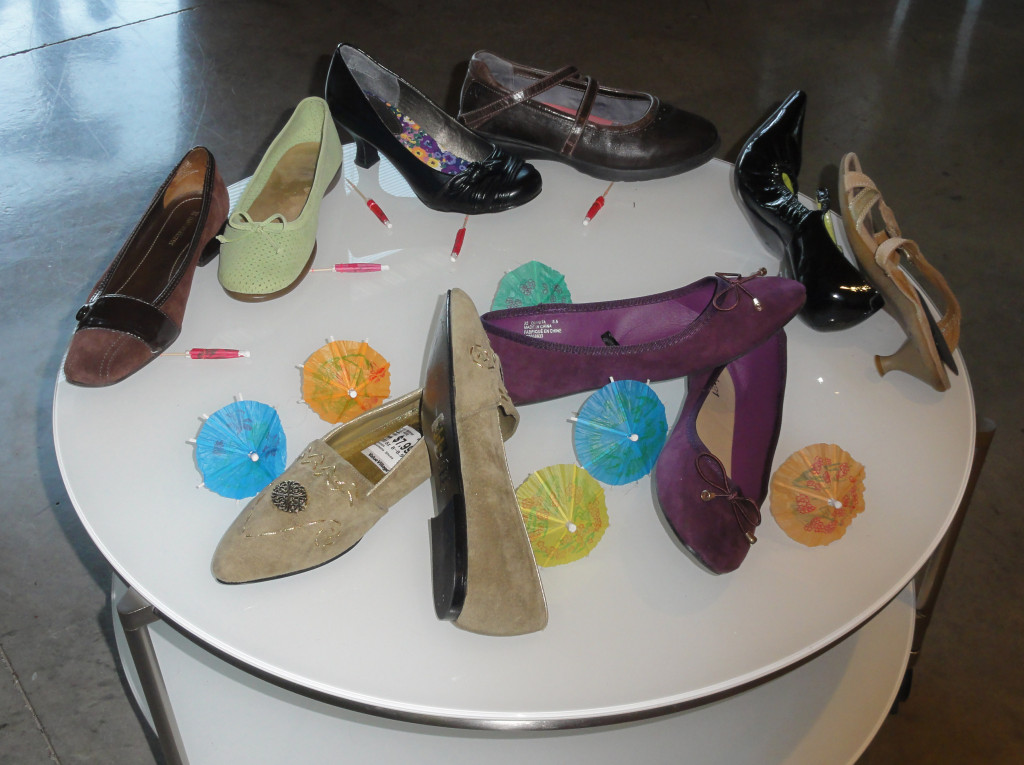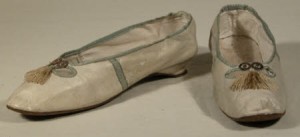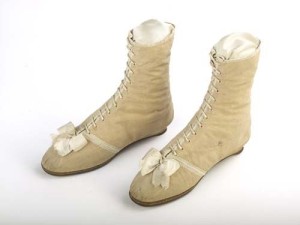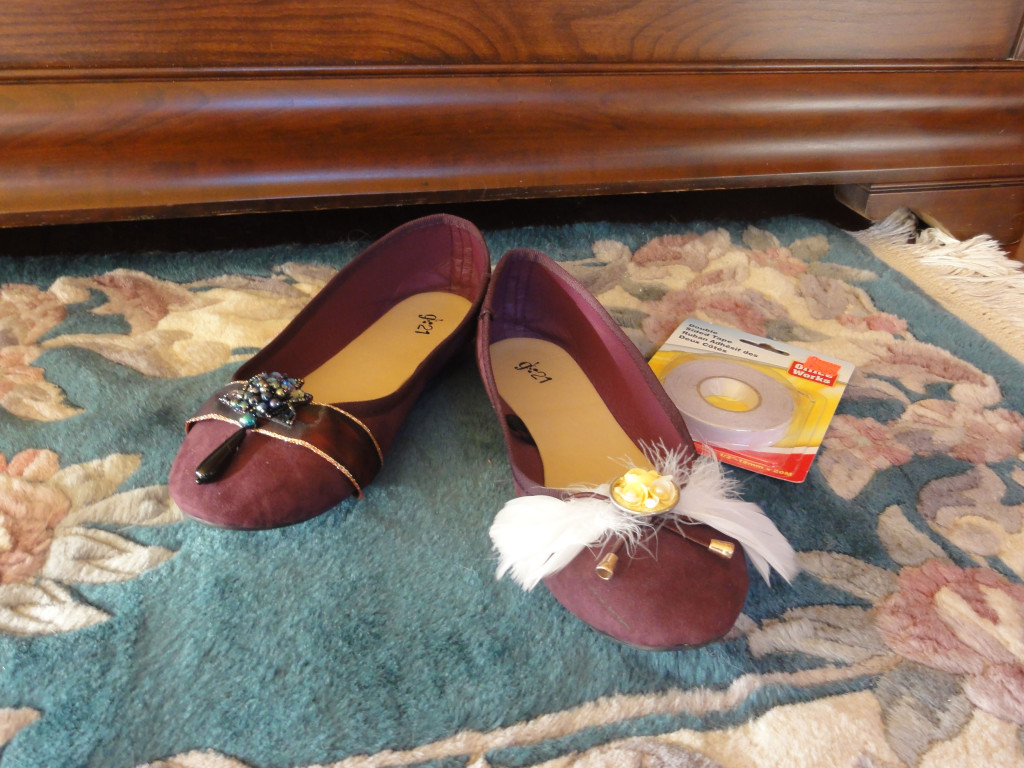An American flag coloured morning gown was suitable for the first official day of the 2015 Louisville JASNA AGM because I planned to be at sessions until about 4 pm, the end of the morning in the Regency period, at least in the city. Austen herself commented about rising at 9am, and many slept until 10am, since balls and social life ended in the wee hours the night before–kind of like it does for many people attending this conference!
We were overtaken today compared to our quiet little pre-conference activity days! Many, many glorious gowns and hats appeared on ladies, and a good half-dozen more costumed gents now hovered about them as they priced out ribbon. I had already been confused and intimidated about purchasing these unique, quality products. Can you imagine having Ms. Silk Reddingote in front of you, passing things to Mr. Custom Top Hat? The “Quality” has come.
I have a cold and a stomach upset of some sort, and since I’ve already been here three days, I’m tired, so I kept Regency hours. Regency ladies breakfasted at nine, took callers or made calls from 2-4, thus the length of the morning. The morning dress should cover the arms and chest during those hours, thus long sleeves and chemisettes, fichus, or lace tuckers were in order.
I wore the same outfit you saw in an earlier post, which I refer to as my “emergency” gown since I put it together in a few days for a Jane Austen Tea put on by my local JASNA in early September.
Here I am again, with more photos so you can see the back and my little “grown up lady’s” cap better. My ringlets turned out nice today. I cheated and used the tiniest amount of makeup, as I’m like Mr. Darcy in MP author Karalynne Mackrory’s book (ghostly complexion) otherwise!
One area of difficulty is I’d originally sewn nothing more than a no-fray finish on the top edge of the petticoats the first time, but lately, I added a narrow waist band with hooks and eyes to close it in back. It has back gathers to match any gown it would be worn with.
When I made the waist band, I measured myself under a regular bra. As you may recall, I’m using a bustier from years back when I was heavier as a corset. With the cups folded in and stitched down, its shape is good and it pushes the girls up well. Its boning is similar to a busk.
It turns out this bustier reduces my rib cage about an inch! I had to safety pin the petticoat to my bustier, and after about an hour, nearly tripped on it, as it was hanging a good eight inches low on one side! Two pins had become undone, as well as the back hooks and eyes! When I tried to fix them without being noticed, I jabbed myself instead! I returned to my hotel room to add more pins and close them with care this time!
The half boots have been enhanced since the other function, and coloured stockings were worn for fun. Please don’t ogle my pantalettes, necessary to keep the dark colour from being seen through two layers of super fine cotton skirts!
I got a generous number of compliments on various aspects of the costume, and several ladies were quite taken by those little boots. They’re a half size larger than my normal shoe size, so I could fit my custom orthotics inside, and save myself from knee pain. They also liked the little blue and gold reticule I got in Cottage Grove, OR on vacation last year.
It surprised me that many ladies wore their spencers or pelisses and hats indoors all day. It wouldn’t have been done in Austen’s time!
Judging from the vendor prices at the conference’s Regency Emporium, some of those big Lady Catherine hats with exotic feathers cost close to $500. I guess they want to get as much mileage out of them as they can, so “screw the idea of wearing just a lace cap indoors!” Similarly, a pretty spencer that took hours (or dollars) to complete should be shown off!
I think I may do the same tomorrow or one of the later days this weekend!
I wasn’t the only one in a cap, as several had lace or fine muslin versions. Some long-haired ladies had not done a Regency hairdo, and had a bare head with their hair down. This all takes time, and we have to cut corners to get to the seminars we waited so long for!
My favourite seminar of the day was on Regency plumbing and how it (and water systems) evolved before and after the Regency. The speaker, Janet Fahey is a P.E. like me! Not much was new to me, as toilets have always fascinated me, but it was a good seminar, and I learned about John Snow, the father of epidemiology, who effectively created the first spreadsheets.
I know, boring compared to big hats and silk riding wear! I’ll try to remember to take some photos for you all to see!
But I have to sew more lacy on my “emergency ball gown” before tomorrow night, so that’s it for this post!
Remember to comment here or on my Facebook page, or to approach me at the conference with a mention of the Thrift Shop Regency Costume Experiment for give-aways of reticules, embroidered handkerchiefs, bling, and more. I have extra prizes, so everyone’s a winner!
Conference delegates, come by the Authors’ signing tables tomorrow at 3:45pm to say “Hi!” to me and Linda Beutler! Better yet, buy a copy of Alias Thomas Bennet from the Jane Austen Books booth at the Emporium, and I’ll sign it for you!
Also, watch for free and sale books from Meryton Press this week, as Managing Editor Michele Reed is at the Southern Festival of Books in Nashville, TN!

